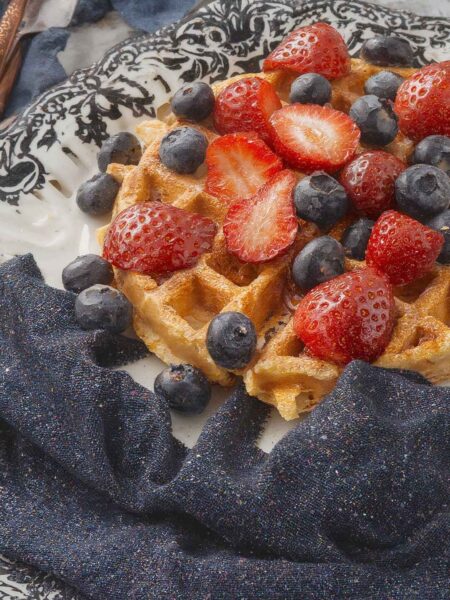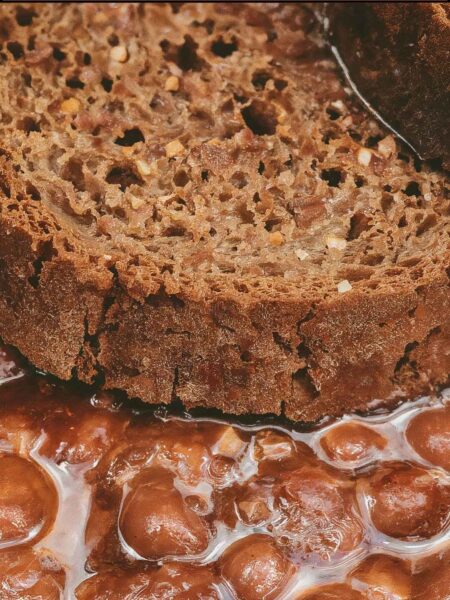Before diving into the heart of paska bread, let’s talk about what to enjoy it with. Paska bread acts as a delightful canvas. Slather it with butter for a classic touch. Cream cheese blends beautifully, adding smoothness.
If you’re feeling adventurous, pair paska with a light spread of berry preserves like raspberry or strawberry for a sweet kick. Lastly, think about serving it alongside savory meats, such as ham or roast chicken, for a delicious contrast.
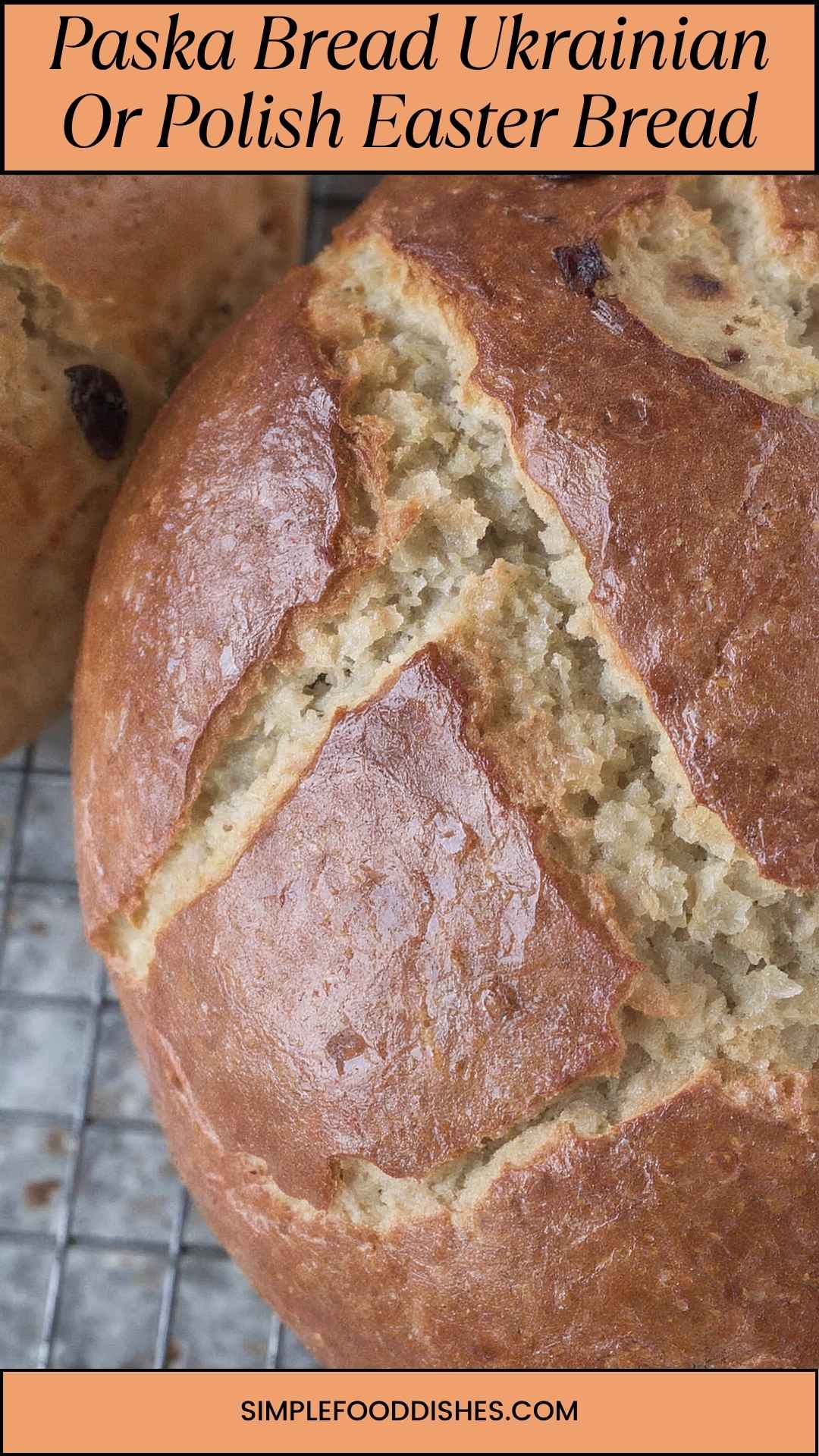
What is Paska Bread?
Paska bread is a rich, slightly sweet bread that often symbolizes the resurrection during Easter celebrations. While many know it simply as “Easter bread,” this treat can differ from region to region. Ukrainian paska may feature a tall, round shape often adorned with intricate braided designs, while Polish versions also have their own twists.
Generally made with flour, eggs, butter, and milk, it’s a bread that requires a bit of patience but rewards you with flavor and tenderness. The core idea is the same: celebrate life, springtime, and the end of fasting with a hearty, flavorful loaf.
Why This Recipe Works?
This recipe for paska bread stands out for several reasons.
It Embraces Tradition:
This bread has been passed down through generations. Rooted in cultural significance, the original methods resonate deeply with family customs. Using this recipe helps keep that lineage alive.
Flavorful Ingredients:
The combination of eggs, butter, and milk provides depth, ensuring a tender crumb and a golden crust. Each ingredient plays a role, contributing to the overall flavor profile.
Versatility:
Paska bread is incredibly adaptable. It can be served with various spreads, from sweet to savory. Want to make breakfast? Top it with yogurt and fruit. Fancy a snack? Pair it with cheese. The possibilities are endless.
Year-Round Enjoyment:
While it holds particular meaning during Easter, there’s no need to wait for spring festivities. This bread can grace tables anytime, enhancing any meal with its flavors and textures.
Ingredients You’ll Need To Make This Paska Bread
To get started on this delightful journey, you’ll need the following ingredients:
For the Sponge:
2 cups warm (not hot) water
0.75 oz. active dry yeast (three packets, 0.25 oz. each)
2 cups all-purpose flour
For the Bread Dough:
1 cup granulated sugar
Golden raisins, added generously or sparingly to your preference
1 to 2 tablespoons fine sea salt, to taste
Zest of 1 large orange (or 2 small ones), finely grated
2 cups whole milk
One 5-lb. bag of all-purpose flour (extra if dough needs adjusting)
8 large eggs, lightly whisked
1 tablespoon pure vanilla extract
1 lb. unsalted butter (equivalent to 4 sticks)
1 egg, beaten, for brushing over the loaves
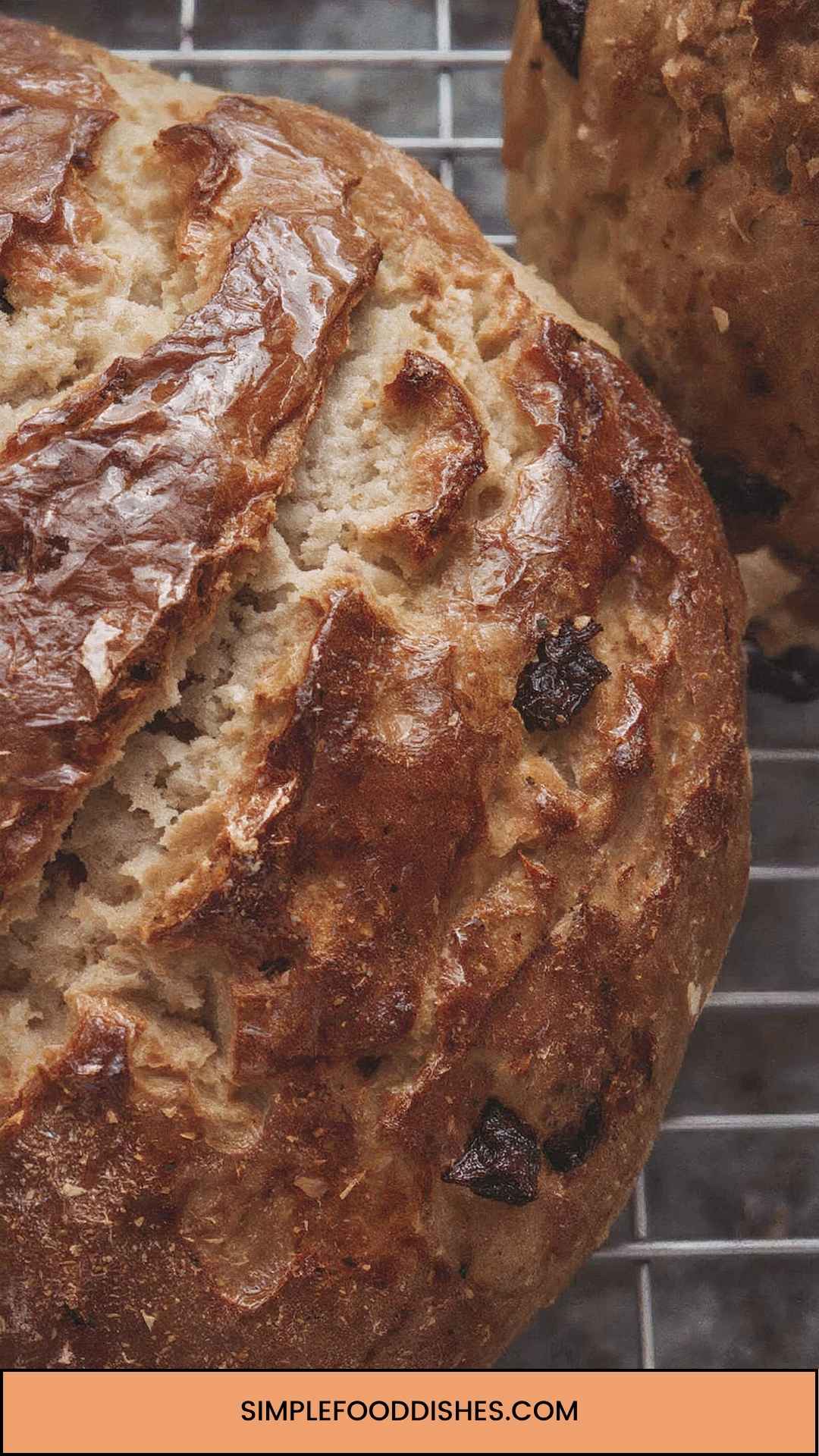
How To Make Paska Bread
Making paska bread can sound overwhelming, but follow these steps, and you’ll see — it’s straightforward!
Step 1: Prepare the Sponge
Combine warm water and yeast in a bowl. Stir gently and let it sit until foamy, about 5-10 minutes. Add 2 cups of flour and mix well. Cover and let this mixture rest for about an hour in a warm spot.
Step 2: Make the Dough
In a large mixing bowl, combine the sponge, remaining flour, sugar, salt, orange zest, milk, eggs, and vanilla. Mix until a shaggy dough forms.
Step 3: Knead
Transfer the dough to a floured surface. Knead for about 10 minutes until it becomes smooth and elastic. If it’s sticky, feel free to add a little extra flour. The goal is a soft but manageable dough.
Step 4: Let It Rise
Place the dough in a greased bowl. Cover and let it rise in a warm place until it doubles in size, usually about 1-2 hours.
Step 5: Add Raisins
Once risen, gently punch down the dough. Fold in the golden raisins and ensure they are evenly distributed.
Step 6: Shape the Loaves
Divide the dough into two or three portions, depending on how large you want your loaves. Shape each portion into a round, tall loaf. Place them in greased baking pans, cover, and let rise again for about 30-45 minutes.
Step 7: Brush & Bake
Preheat your oven to 350°F (175°C). Before baking, brush the tops with the beaten egg. Bake for about 30-40 minutes or until golden brown and sounds hollow when tapped on the bottom.
Step 8: Cool
Let the loaves cool in the pans for a few minutes before transferring them to a wire rack. Enjoy!
Tips
Here are some handy tips to ensure your paska bread turns out perfectly:
Use Fresh Yeast: Always check your yeast’s expiration date. Stale yeast won’t rise properly.
Check Your Water Temp: Warm water is key for activating yeast. Too hot? It may kill the yeast. Too cold? It won’t activate it.
Don’t Rush the Rising: Allow the dough ample time to rise. Patience is truly a virtue in bread-making.
Experiment with Flavors: Feel free to add different zest or even nuts to the dough for a unique twist.
Keep an Eye on Baking Time: Ovens can vary. Start checking for doneness a few minutes early to prevent burning.
Nutrition Information
Nutrition is important for many, and while bread is often viewed as indulgent, moderate consumption is part of a balanced diet. Here’s a rough estimate for one slice (based on standard servings):
- Calories: 210
- Total Fat: 8g
- Saturated Fat: 5g
- Cholesterol: 80mg
- Sodium: 210mg
- Total Carbohydrates: 33g
- Dietary Fiber: 1g
- Sugars: 6g
- Protein: 4g
How to Store Leftovers
If you find yourself with leftover paska, store it properly to maintain freshness. Wrapped in plastic wrap or stored in an airtight container, this bread can last for a few days at room temperature. For longer storage, slice and freeze! When you’re ready for a piece, just toast it up, and it’ll taste fresh.
Recommended Side Dishes for Paska Bread
Looking to elevate your meal with paska bread? Here are some side dish suggestions:
Creamy Potato Salad:
A potato salad dressed in creamy goodness works wonders to complement paska’s texture. The coolness of the salad contrasts beautifully with the warm bread.
Honey-Glazed Carrots:
Sweet carrots enhance paska’s mild sweetness. A touch of honey brings out the natural flavors while adding a pop of color to your plate.
Fresh Green Salad:
A simple green salad with a light vinaigrette balances the richness of paska. Add ingredients like cucumber and cherry tomatoes for freshness.
Roasted Chicken:
A savory roasted chicken enhances the meal. The juices from the chicken pair well with the bread, making it an ideal protein accompaniment.
Substitute Options for Ingredients
Maybe you’re short on a few ingredients! No worries. Here are some substitutes:
Active Dry Yeast:
Use instant yeast if that’s what you have. There’s no need to dissolve it; just mix it with the dry ingredients.
Whole Milk:
Need a non-dairy option? Almond milk or soy milk can do the trick. Just ensure they’re unsweetened.
Granulated Sugar:
Substitute brown sugar for a richer flavor. It’ll add a hint of caramel that’s delightful.
Eggs:
If you’re following a plant-based diet, use flaxseed. For each egg, mix 1 tablespoon of ground flax with 2.5 tablespoons of water and let it sit for a few minutes until it thickens.
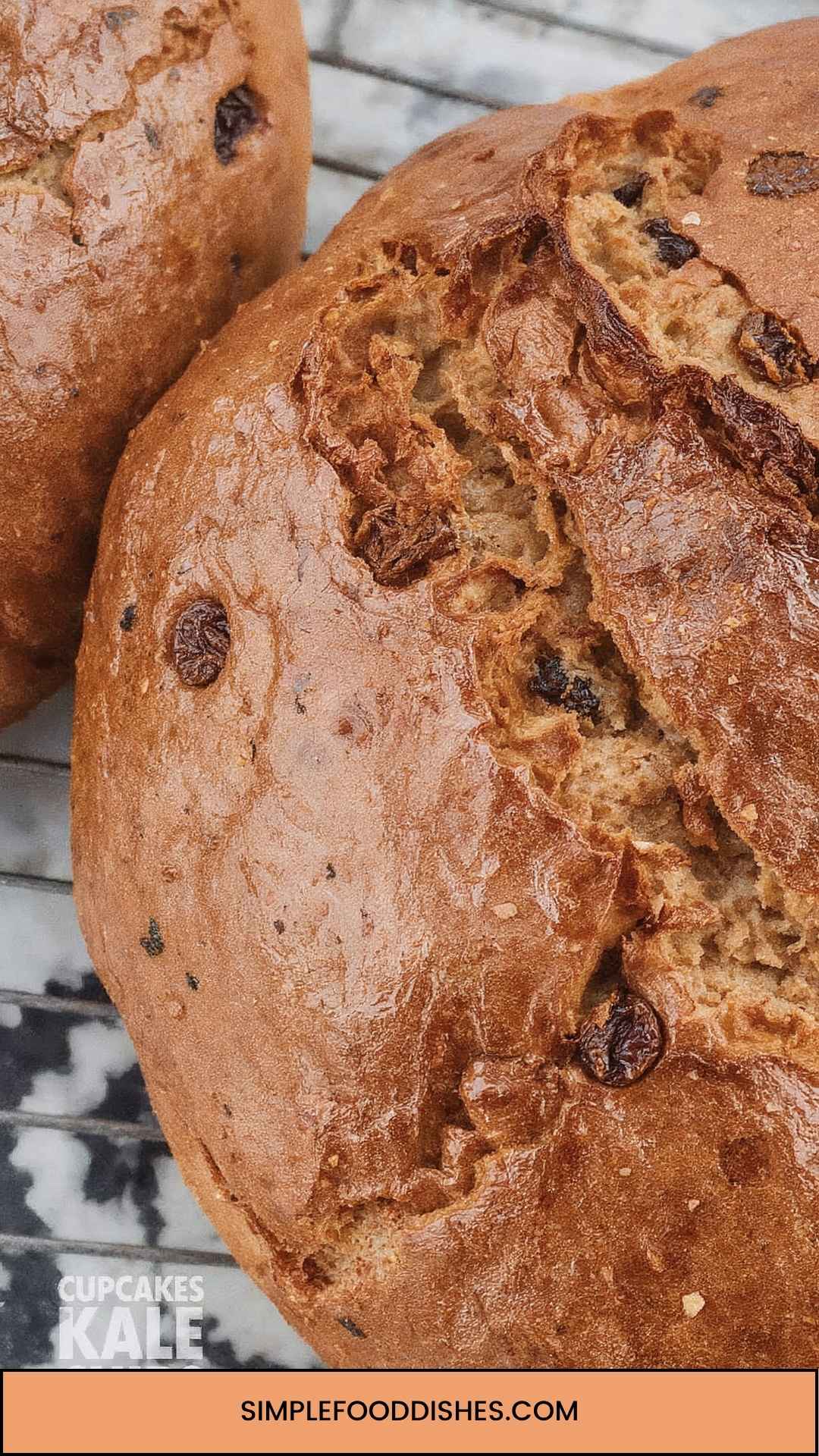
Conclusion
Paska bread is more than just a recipe; it’s a vessel of tradition and a celebration of life. Every ingredient brings with it a connection to those who made this bread before us. Whether you follow the traditional path or add your own twist, each loaf tells a story.
Baking can seem intimidating, but with this guide, you’re well-equipped to make delicious paska bread. Share it with family, enjoy it with friends, or savor it alone — each bite will echo the love and traditions woven into its creation.
So roll up your sleeves, gather your ingredients, and get ready to fill your kitchen with warmth, joy, and the irresistible smell of freshly baked bread. Happy baking!
You’ll also like the following recipes!
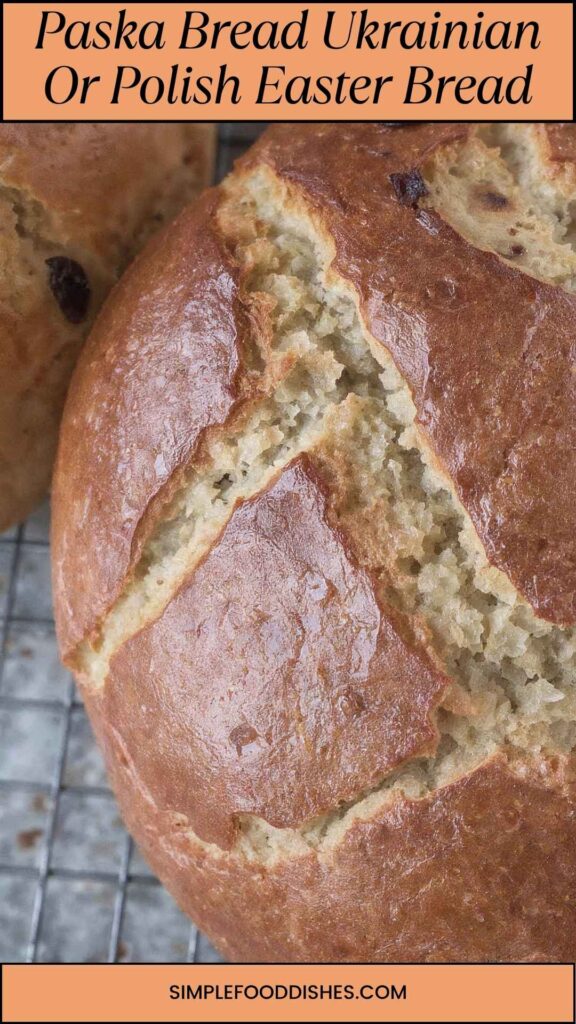
Paska Bread Ukrainian Or Polish Easter Bread – Simple Food Dishes
Description
Growing up in a household where traditions wove through every meal, Easter was an occasion steeped in aromas and flavors. There was one showstopper that always took center stage: paska bread.
This isn't just any bread — it’s an Easter bread with roots in both Ukrainian and Polish cultures, each bathed in its own unique charm. As our family gathered, laden with colorful eggs and the smells of spring, the golden crust of paska shined, inviting us to break bread together.
With its rich history and numerous variations, paska bread has become a staple for many families celebrating Easter. This story isn't just about bread; it's about continuity, love, and shared memories.
Ingredients
Ingredients
For the Bread Dough:
Instructions
Step 1: Prepare the Sponge
-
Combine warm water and yeast in a bowl. Stir gently and let it sit until foamy, about 5-10 minutes. Add 2 cups of flour and mix well. Cover and let this mixture rest for about an hour in a warm spot.
Step 2: Make the Dough
-
In a large mixing bowl, combine the sponge, remaining flour, sugar, salt, orange zest, milk, eggs, and vanilla. Mix until a shaggy dough forms.
Step 3: Knead
-
Transfer the dough to a floured surface. Knead for about 10 minutes until it becomes smooth and elastic. If it’s sticky, feel free to add a little extra flour. The goal is a soft but manageable dough.
Step 4: Let It Rise
-
Place the dough in a greased bowl. Cover and let it rise in a warm place until it doubles in size, usually about 1-2 hours.
Step 5: Add Raisins
-
Once risen, gently punch down the dough. Fold in the golden raisins and ensure they are evenly distributed.
Step 6: Shape the Loaves
-
Divide the dough into two or three portions, depending on how large you want your loaves. Shape each portion into a round, tall loaf. Place them in greased baking pans, cover, and let rise again for about 30-45 minutes.
Step 7: Brush & Bake
-
Preheat your oven to 350°F (175°C). Before baking, brush the tops with the beaten egg. Bake for about 30-40 minutes or until golden brown and sounds hollow when tapped on the bottom.
Step 8: Cool
-
Let the loaves cool in the pans for a few minutes before transferring them to a wire rack. Enjoy!
Nutrition Facts
Servings 48
- Amount Per Serving
- Calories 210kcal
- % Daily Value *
- Total Fat 8g13%
- Saturated Fat 5g25%
- Cholesterol 80mg27%
- Sodium 210mg9%
- Total Carbohydrate 33g11%
- Dietary Fiber 1g4%
- Sugars 6g
- Protein 4g8%
* Percent Daily Values are based on a 2,000 calorie diet. Your daily value may be higher or lower depending on your calorie needs.
Note
- Use Fresh Yeast: Always check your yeast's expiration date. Stale yeast won't rise properly.
- Check Your Water Temp: Warm water is key for activating yeast. Too hot? It may kill the yeast. Too cold? It won’t activate it.
- Don’t Rush the Rising: Allow the dough ample time to rise. Patience is truly a virtue in bread-making.
- Experiment with Flavors: Feel free to add different zest or even nuts to the dough for a unique twist.
- Keep an Eye on Baking Time: Ovens can vary. Start checking for doneness a few minutes early to prevent burning.




